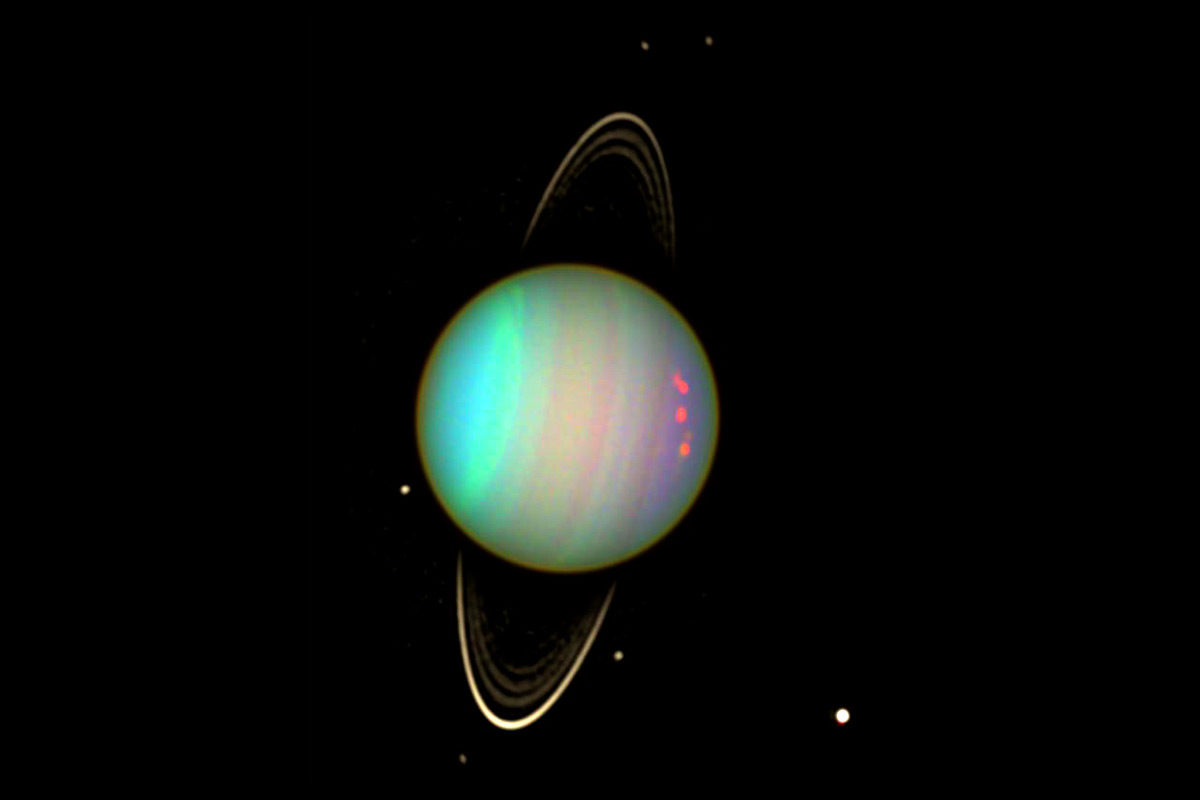
© NASA/Erich Karkoschka (Univ. Arizona)Now with added Trojans.
A Trojan asteroid orbits the sun 60 degrees ahead of or behind a planet. Jupiter and
Neptune have numerous Trojans, many of which have been in place for billions of years. These primordial rocks hold information about the solar system's birth, and
NASA has just announced plans to visit several of them in the 2020s and 2030s.
But Saturn and Uranus live in a rougher neighbourhood: the giant planets on either side of them yank Trojans away through their gravitational pull. So Saturn has no known Trojan, and
Uranus had only one.
In July, though, astronomers
reported a new asteroid, named 2014 YX49, that shares Uranus's orbital period of 84 years. Now computer simulations of the solar system by brothers Carlos and Raul de la Fuente Marcos at the Complutense University of Madrid, Spain, indicate the asteroid is a Uranus Trojan. The simulations show that the asteroid has maintained its position ahead of Uranus for thousands of years.
"It is bigger, probably twice as big as the first one," says Carlos. The new asteroid is brighter than the first, but its exact size depends on how much light its surface reflects. If it reflects half the sunlight striking it, it's 40 kilometres across; if it reflects 5 per cent, its diameter is 120 kilometres.
Accidental findThe new asteroid was found by accident, which Carlos says implies there should be more waiting to be discovered.
He thinks its Trojans could number in the hundreds.Unlike the Trojans of Jupiter and Neptune, the simulations suggest that the two known Uranus Trojans are transient rather than permanent. Carlos suspects Uranus lacks primordial Trojans because the other giant planets kicked them away.
The simulations indicate that the new asteroid was once a
centaur, an object that skirts between the orbits of the giant planets. About 60,000 years ago, buffeted by their gravitational tugs, it was caught ahead of Uranus in its orbit around the sun and became a Trojan; it is likely to remain so for another 80,000 years, before eventually becoming a centaur again.
Although Carlos thinks Uranus has no permanent Trojans,
David Jewitt at the University of California at Los Angeles is willing to wait and see. "In the end the answer will come — as always — from observations," he says. "People will either find permanent Uranus Trojans or not."
And Saturn? "The neighbourhood of Saturn is even more chaotic than that of Uranus," Carlos says, due to Jupiter's proximity. Still, he thinks Trojans of Saturn could exist.
Journal references: Monthly Notices of the Royal Astronomical Society and ArXiv,
arxiv.org/abs/1701.05541

Reader Comments